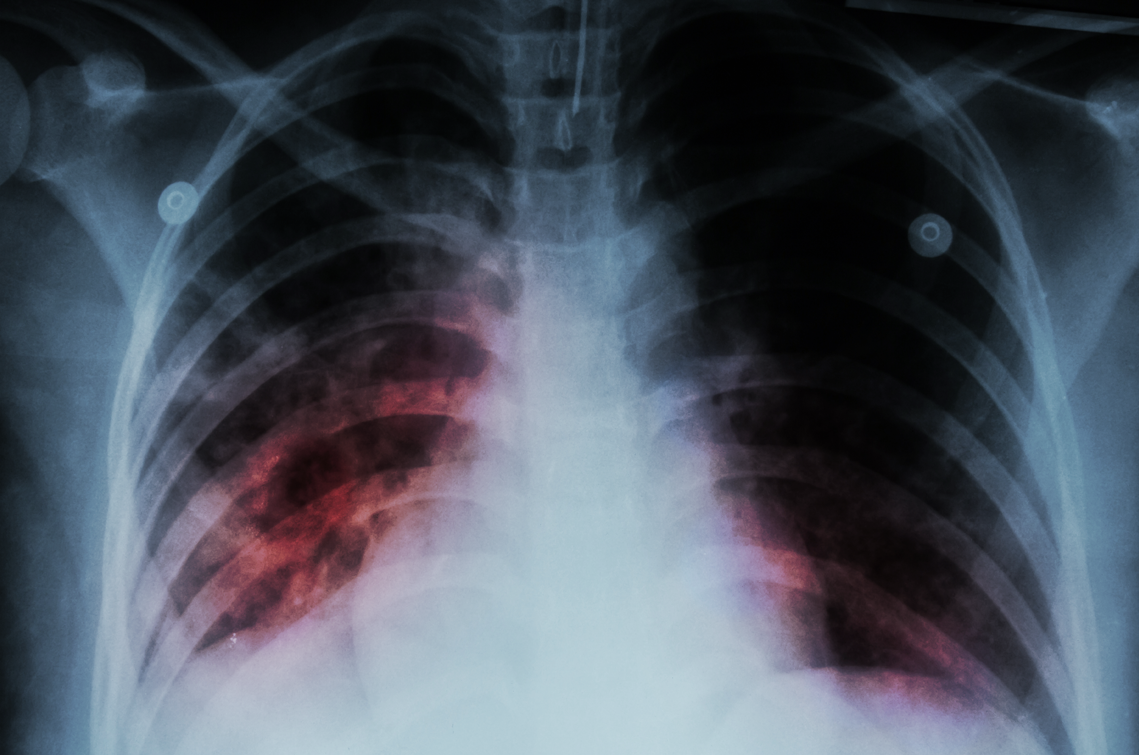Tuberculosis - increased number of cases worldwide
Tuberculosis is the most common deadly infectious disease worldwide. According to the Robert Koch Institute (RKI), the topic of tuberculosis is still relevant in Germany too. After years of decline, the number of cases is currently on the rise again.1
After an initial rise in 2015/2016, tuberculosis cases increased again following the Covid-19 pandemic. The number of cases in Germany increased from 3,931 (2021) to 4,082 (2022) and 4,471 (2023). The most recent incidence of tuberculosis in Germany was 5.3 per 100,000 inhabitants.1
This is in line with the internationally observed increase from an estimated 10.0 million (2020) to 10.3 million (2021) and 10.6 million cases in 2023 (95% uncertainty interval [UI]: 9.9-11.4 million). In 2022, the estimated incidence rate of tuberculosis, i.e. new cases per 100,000 inhabitants per year, was 133 worldwide (95% UI: 124-143).2
Increased incidence of infection worldwide
Of particular concern is the growing number of people with undiagnosed and therefore untreated tuberculosis, which manifests itself in increased tuberculosis-related deaths and an increased incidence of infection.3 The initial downward trend in estimated tuberculosis-related deaths per year, which was still observed worldwide between 2005 and 2019, has thus reversed. The estimated annual tuberculosis-related deaths rose from 1.4 million (2019) to 1.5 million (2020) and 1.6 million (2021).3
Against the background of the war in Ukraine and other ongoing conflicts and crises worldwide, as well as the associated risks to food security, it cannot be assumed that the number of tuberculosis infections will fall in the short term.3
Chest X-ray examination as an important screening tool
If pulmonary tuberculosis is suspected in a patient, the chest X-ray examination is part of the differential diagnostic standard alongside bacteriological diagnostics and can also be used for therapy monitoring and early detection of possible sources of infection.4
Recently, chest X-ray examinations have also become increasingly important as a screening instrument that can be used early on in the infection process, as they have considerable sensitivity. Depending on whether only evidence of active tuberculosis or also of inactive tuberculosis is evaluated in the X-ray findings, the chest X-ray examination achieves sensitivities of 87% (95% confidence interval [CI]: 79-95]) or 98% (95% CI: 95-100).5
Another reason for the increased importance of chest radiography as a screening instrument is the improved availability of digital radiography in particular, which has decisive advantages over conventional radiography in terms of image quality, safety (lower radiation dose) and operating costs. In addition, digital radiography enables the use of portable devices in remote areas or the use of mobile devices for patients who cannot be mobilised. This can contribute to the effective containment of infections.6
Germany is a low-incidence country, but tuberculosis remains relevant.
Despite the observed increase, tuberculosis remains a relatively rare disease in Germany, which is currently considered a low-incidence country (< 10 cases per 100,000 inhabitants). However, Germany is also affected by global developments and the associated flight and migration movements. ‘If a cough persists for a longer period of time, tuberculosis should also be considered and further examined by means of an X-ray examination of the lungs in accordance with existing recommendations,’ advises Lars Schaade, President of the Robert Koch Institute. 7
Sources
1RKI. Tuberkulose – auch für Deutschland nach wie vor relevant. Accessible online: https://www.rki.de/DE/Content/Service/Presse/Pressemitteilungen/2024/04_2024.html
2WHO. Global Tuberculosis Report 2023. Accessible online: https://iris.who.int/bitstream/handle/10665/373828/9789240083851-eng.pdf?sequence=1
3WHO. Global Tuberculosis Report 2022. Accessible online: https://iris.who.int/bitstream/handle/10665/363752/9789240061729-eng.pdf?sequence=1
4RKI. Tuberkulose RKI Ratgeber. Accessible online: https://www.rki.de/DE/Content/Infekt/EpidBull/Merkblaetter/Ratgeber_Tuberkulose.html#doc2374486bodyText9
5WHO. Systematic screening for active tuberculosis. Accessible online: https://iris.who.int/bitstream/handle/10665/84971/9789241548601_eng.pdf?sequence=1
6WHO. Chest Radiography in Tuberculosis Detection. Accessible online: https://iris.who.int/bitstream/handle/10665/252424/9789241511506-eng.pdf?sequence=1Von
7Lars Schaade (Präsident des Robert Koch-Instituts). Tuberkulose hat eine große Relevanz für die öffentliche Gesundheit. Accessible online: https://www.linkedin.com/posts/robertkochinstitut_welttuberkulosetag-tuberkulose-pressemitteilung-activity-7173996936662806528-sl0K?utm_source=share&utm_medium=member_desktop
